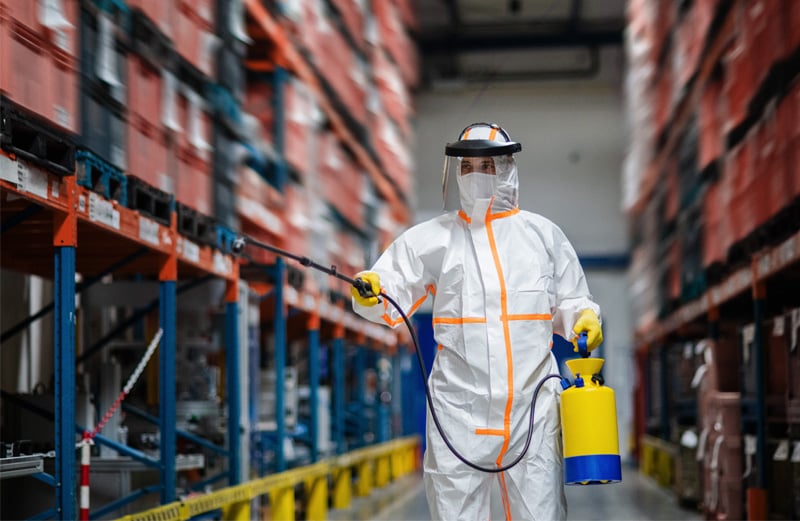Every 15 seconds, 160 workers around the world are injured from work-related accidents; one of them will die from the resulting injuries or related illness.(1) In Canada the record is better, but workplace accidents still caused 852 fatalities in 2015, a figure that has not seen a meaningful reduction for over two decades.(2)
Canada is a country forged on tough physical work, built from a bounty of natural resources and extreme distance. Canada's very existence is built on a backbone of iron and steel. The railroad linking one coast to the other was the condition of British Columbia joining the club. That backbone forged ties of trade and is the foundation of Canada's current economic success, but it came at an unimaginable cost. By some tales a life was lost for every mile of track laid and there were countless more injuries. We have come a long way since those days but Canada has a real opportunity to be a leader when it comes to health and safety in these tough resource-based environments.
There is a need for strong leadership, and Canada can set an example for resource economies around the world. Every year, two million workers around the world, including employees and contractors, lose their lives due to onsite accidents and occupational disease.(3) The global annual economic cost of workplace injuries, including treatment and rehabilitation, compensation, and lost productivity, totals US $2.8 trillion, more than the gross domestic product (GDP) of the United Kingdom.(3) For Canada this costs the economy nearly $20 billion annually in direct costs like compensation, and indirect costs like ongoing healthcare and less impact of those people in the workforce.(4)
The business impacts of experiencing workplace accidents are broad, beyond the pure financial and legal implications, it has major implications for reputations which can lead to operational problems and lead to challenges recruiting. Businesses can normally recover from financial and other setbacks, but families struggle to recover from an injury to a loved one; especially when in the case of occupational hazards, it is also preventable.
There is a real opportunity to bring technological advances happening in all aspects of the economy to help make a major difference in reducing workplace accidents.
Technology as a Contractor Management System
Rapid advances in cloud computing and data management technologies have had profound, structural impacts on how businesses operate and interact internally and with customers. However, their application in arguably the most important area for an organization - the health and safety of employees and contractors - remains ad hoc. When coupled with training and education, technology can have a significant impact on reducing workplace injuries.
For the most part, employers recognize their obligations in ensuring a safe workplace for employees and work hard to keep their people safe. However, the same procedural due diligence and vigilance is not always at the same levels for independent contractors, who are up to three times more likely to be injured at work. Existing management systems rely on spreadsheets, emails, and phone calls, in addition to random spot checks, to ensure contractors have the right skills and safety training.
These strategies create an illusion of safety and compliance. When working under physically precarious circumstances, the training and credentials of everyone on a site, not only those selected at random, should be verified to ensure they can do the job properly and safely. A recent review of health and safety policy in Ontario recognized the rules in place were probably adequate, the focus should be on better implementation and enforcement.
Technology is Useful to Reduce Cost
As the number of contractors grows, the regulatory documentation, verifications, and controls required can reach unmanageable levels. Data verification and evaluation can become cost- and time-prohibitive. Checking certifications, and course completions are up-to-date manually can take hours which is why they are often missed. The amount of time taken to ensure paper work is all in order can also take away from providing hands on support to identify risks, provide training, and put in place systems to mitigate that risk.
As with most areas technology can reduce the costs associated with verifying contractor profiles significantly. When applied across an organization it will create accessible information and accountability throughout the organization, protect the business from costly liabilities associated with occupational accidents, and most importantly keep all people entering a site to do work safe.
Technology Allows to Obtain an Overview
The other benefit of digitizing this information is the opportunity around predictive analytics to drill into the real causes of workplace accidents. Typically, incident reports include what happened, but not why. Looking more deeply into other factors like weather, time of day, state of equipment, training and experience. This can help to get to the root causes of workplace incidents to bring in more tailored approaches to reducing accidents.
Whether contractors or employees, the safety of personnel should be of paramount concern to businesses. Technology has permeated every area of our life, from how we communicate with each other, to how we entertain ourselves. If it can be integrated with business operations to eliminate occupational accidents and protect people, its implementation should be a no brainer as the return on investment can far exceed the outlay.
The use of technology itself is only one component of creating and maintaining a contractor safety management program. Safety starts at the top, and sometimes a shift in philosophy is needed to ensure external contractors are afforded the same level of protection as employees. In addition, there may be no choice, international standards are being updated, national regulations on health and safety are becoming more stringent, and the punishments are becoming harsher.
It is time we started using the technology available in so many other walks of life to make a big difference where it can have such an important impact – preventing workplace accidents.
- http://www.unric.org/en/latest-un-buzz/29758-every-15-seconds-a-worker-dies-from-a-work-related-accident-or-disease
- Association of Workers’ Compensation Boards of Canada (AWCBC)
- http://www.un.org/en/events/safeworkday/
- http://www.labour.gc.ca/eng/health_safety/pubs_hs/oidc.shtml





